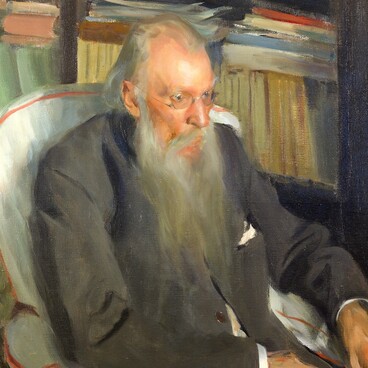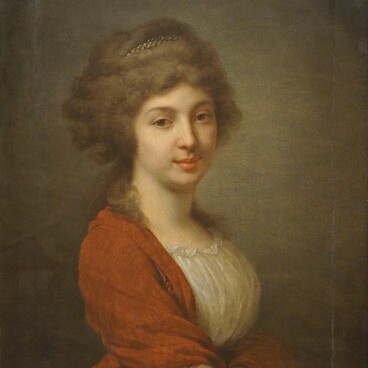Portrait painter and master of watercolor miniatures, Ivan Winberg was born into the family of a Swedish jeweler who lived and worked in St. Petersburg in 1791-1816. Presumably, Winberg received his primary art education under the tutorship of his father.
Winberg most often painted miniature portraits in watercolor and gouache. Since 1824, the artist repeatedly presented his miniatures at exhibitions held in the halls of the Imperial Academy of Arts. In 1830, he received the title of ‘appointed academician’, and later academician as an award for his portrait of Tsar Alexander I.
Art historians note that portrait miniatures appeared in Russia during the reign of Peter the Great. In 1698, during his first trip abroad, the emperor commissioned a famous English master Charles Boit to create several enamel miniatures. He wanted the miniature to be based on his portrait which court portraitist Godfrey Kneller had created a year earlier.
Subsequently, it became a tradition and a very high honor to receive miniature portraits of reigning monarchs depicted on medallions or snuff boxes as awards for special services. They were often decorated with precious stones. At the beginning of the 19th century, miniatures became popular interior décor items: they were framed, displayed on tables or were hung on the walls of offices, libraries, and living rooms. Due to the great popularity of this genre, a miniature painting class was established at the Imperial Academy of Arts in 1779.
Since the middle of the 19th century, miniatures were often painted on ivory plaques. Silver or gold foil was usually placed under them to enhance the brightness of the colors. Portraits were painted in gouache in the technique of pointelle — opaque paints were applied in bold brush strokes. The masters used watercolors when they wanted the natural tone of ivory to show through the semi-transparent paints. In Russia, mainly the royal family members and court gentry commissioned such miniatures.
Nicholas I, the Emperor of All Russia, King of Congress Poland and Grand Duke of Finland, the third son of Emperor Paul I and Maria Feodorovna, is depicted on the miniature, which is housed in the museum. The miniature is made in the technique of pointelle — the artist used small dots and short brush strokes. The background and costume are painted in wider, liberal brush strokes.
Winberg most often painted miniature portraits in watercolor and gouache. Since 1824, the artist repeatedly presented his miniatures at exhibitions held in the halls of the Imperial Academy of Arts. In 1830, he received the title of ‘appointed academician’, and later academician as an award for his portrait of Tsar Alexander I.
Art historians note that portrait miniatures appeared in Russia during the reign of Peter the Great. In 1698, during his first trip abroad, the emperor commissioned a famous English master Charles Boit to create several enamel miniatures. He wanted the miniature to be based on his portrait which court portraitist Godfrey Kneller had created a year earlier.
Subsequently, it became a tradition and a very high honor to receive miniature portraits of reigning monarchs depicted on medallions or snuff boxes as awards for special services. They were often decorated with precious stones. At the beginning of the 19th century, miniatures became popular interior décor items: they were framed, displayed on tables or were hung on the walls of offices, libraries, and living rooms. Due to the great popularity of this genre, a miniature painting class was established at the Imperial Academy of Arts in 1779.
Since the middle of the 19th century, miniatures were often painted on ivory plaques. Silver or gold foil was usually placed under them to enhance the brightness of the colors. Portraits were painted in gouache in the technique of pointelle — opaque paints were applied in bold brush strokes. The masters used watercolors when they wanted the natural tone of ivory to show through the semi-transparent paints. In Russia, mainly the royal family members and court gentry commissioned such miniatures.
Nicholas I, the Emperor of All Russia, King of Congress Poland and Grand Duke of Finland, the third son of Emperor Paul I and Maria Feodorovna, is depicted on the miniature, which is housed in the museum. The miniature is made in the technique of pointelle — the artist used small dots and short brush strokes. The background and costume are painted in wider, liberal brush strokes.



